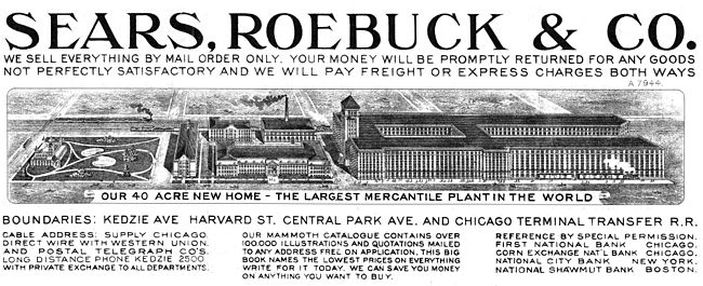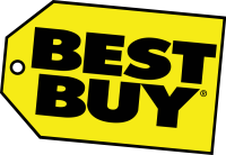 Image © by Brian E. Faulkner
Image © by Brian E. Faulkner “We’re still dealing with the fallout of the end of the Cold War. We’re still dealing with the fallout of a post-9/11 world. And I think a lot of people are able to question (Mrs. Clinton's) role in the president’s record on the question of where is the grand strategy? Where is the vision of how to take America into a situation where we’re not dealing episodically with lots of crises without an overall sense of how to bring things together?”
Where is the vision, indeed!
How do we “position” ourselves in the world? How do we want to be perceived – generally and in light of tectonic shifts in geo-politics? Where are we going? How will we get there? And how does all this impact my world, my country and me?
The political parties and their presidential aspirants could do well to figure that out.
“The vision thing,” as George H. W. Bush famously called it back in 1987, has tripped up many a politician – and business leader. Vision is not something you brainstorm for a couple of hours during a weekend retreat, tack on the office wall and forget about (although I have seen that happen many a time). A well-grounded vision should arise from the core of your business with the vigor of Jack’s beanstalk because it wraps competency, focus and future into a single commanding insight about who you are and what you bring to the world. Vision fuses who you are with what you want to become. It propels you into tomorrow and next year and the year after that -- whether company or country. Decisions no longer get made piecemeal but are considered within the context of a well understood, well accepted and forward-looking strategic framework.
My definition of vision is a dream with a goal.
Too simple? Vision is simple. Making vision complicated is make-work. And a disservice to your organization and the people who will help imagine and fashion your future.
All too often, however, we give little more than lip service to vision. As Halperin noted, we react episodically. We may solve some immediate problem with clever footwork but, in the long run, not get much more than a rim shot in return.
The Obama administration appears to lack vision. The president and his frequently flying secretary of state seem to react to foreign policy situations while fostering the impression of acting deliberately. It seems true in their Middle East decision-making and when dealing with the seemingly indomitable Mr. Putin -- unless, of course, the administration’s actions are being guided by a strategy that simply isn’t apparent to the rest of us. Either way, the perceived result is the same: geo-political muddle.
Our leaders do the country a disservice by not connecting the dots, by refusing (or neglecting) to meld the people’s dreams and goals into a clear and compelling vision, whether they’re talking about “rebuilding the middle class” or how government plays out its foreign policy on their behalf. Historian and diplomat George F. Kennan once stated that, as an agent of the people (but not a principal unto itself), the primary obligation of government is to the “interests of the national society it represents … military security, the integrity of its political life and the well-being of its people.”
Considered in that light, is it clear that President Obama has a vision for America – for all Americans? Is he serving the interests of the national society he represents? Or is he working his own agenda? And are we in for more of the same if the Democrats’ leading contender is elected president in 2016?
On CNN this weekend, geo-political commentator and author Fareed Zakaria asked Hillary Clinton about the upcoming presidential campaign, to which she responded, in part, with her view about visioning:
“Every election is sui generis. I think it starts with where we are in the country at this time, with what Americans are thinking, feeling and hoping, and it proceeds from there. And it is always about the future. … The questions for somebody running for president are not, you know, will you run and can you win … you have an election, not about a candidate, but you have an election about an agenda.”
The comment suggests that one day Mrs. Clinton actually may come up with a vision that helps the American people discern whether her view of our country and its place in the world earns their vote. Meanwhile, even NPR national political correspondent Mara Liasson says that Hillary lacks “a big idea.” Clinton’s early-bet, very liberal opponent, Elizabeth Warren (who says she’s not running in the primary), already has posted a list of 11 Progressive Commandments that leaves no doubt about her vision for the country, at least regarding domestic issues. I admire her specificity if not her politics.
What about your business? Do you have a vision? Does it reflect your present and illuminate your future?
- Perhaps your business strategy is concerned with protecting what you’ve already built.
- Maybe your company banks on its ability to respond with agility to present and emerging customer needs – faster and with greater innovation than its competitors.
- Or you’re a groundbreaker, with that rare ability to see beyond the horizon, make new things happen and change the world.
In each case, your business should be guided by a strategic vision that your people understand and buy into, a vision that reflects both its dream for the future and a concrete goal somewhere out there in time. Proverbs 29:18 (KJV) says “Where there is no vision, the people perish.” They also are apt to react to situations episodically (interestingly, a more up-to-date translation of the Proverbs verse suggests that things tend to fall apart without having first acceded to God’s guidance).
Content © by Brian E. Faulkner
Tags: vision, strategic vision, Bloomberg Politics, Mark Halperin, Hillary Clinton, Morning Joe, President Obama, Cold War, George H. W. Bush, George F. Kennan, Fareed Zakaria, Elizabeth Warren, 11 Progressive Commandments, Proverbs 29:18
ABOUT BRIAN FAULKNER:
> blogs to establish you as the thought leader / authority in your business category
> case stories that communicate your sales successes and invite prospect inquiry
> testimonials that showcase customer / client satisfaction in 1-2 short sentences
> positioning statements to guide business development & marketing
> landing page copy to set your business or brand apart in a compelling way
> tagline development to attract the interest of your most qualified prospects
Brian also is a three-time Emmy award-winning Public Television writer / narrator and is principal writer and narrator of UNC-TV’s popular "Our State" magazine series, on the air since 2003. His distinctive sound has been heard on many hundreds of radio spots and client videos since the 1970s. People say he has a “Mercedes voice” and sounds a bit like Charles Kuralt, which Brian considers a welcome ... but happy ... illusion.





 RSS Feed
RSS Feed